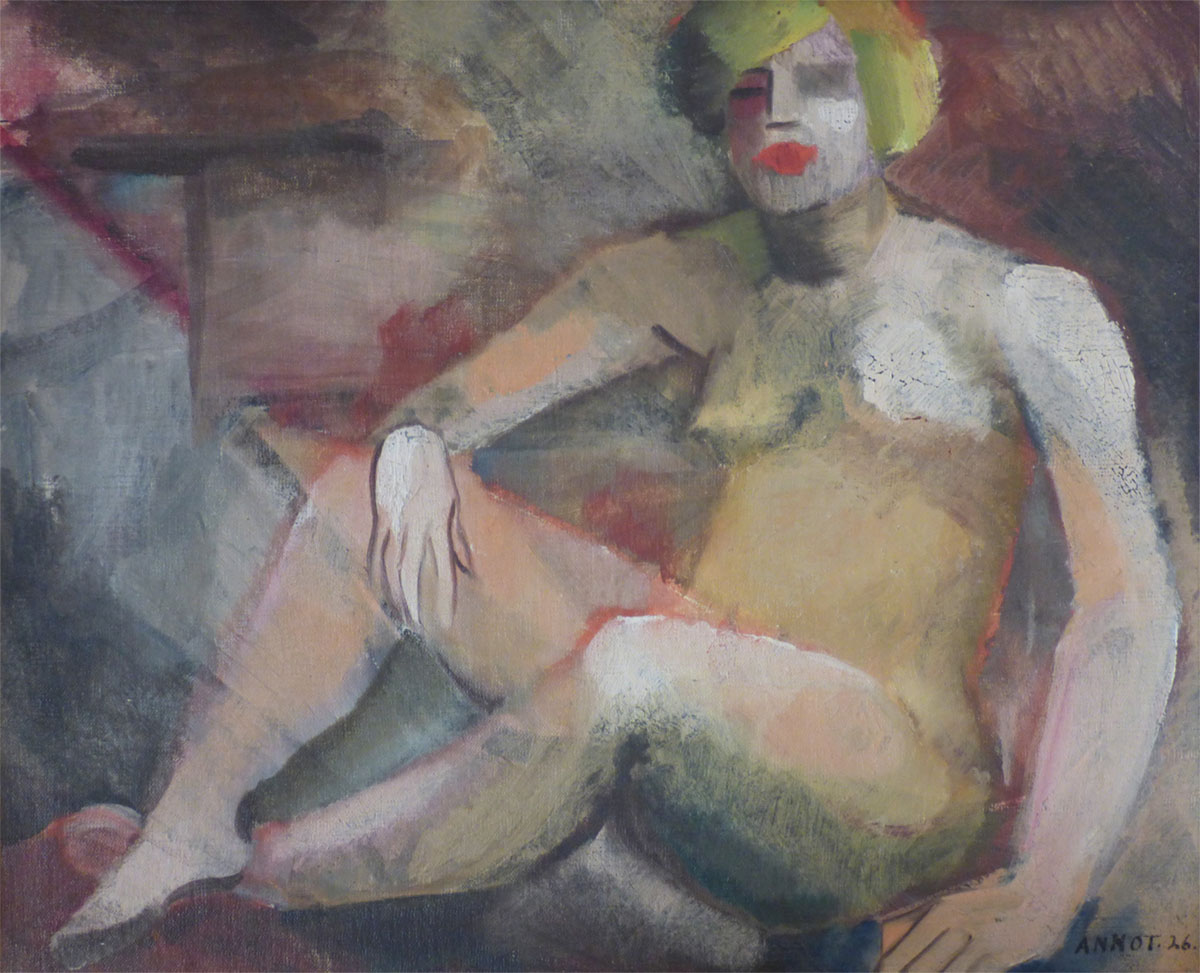LECTURE
on June 20, 2024
at 19.00
Admission fee 5 euros | reduced 3 euros
Art historian Victoria Hohmann-Vierheller introduces the life and work of Annot Jacobi (1894-1981), the prolific artist and great-niece of the painter Adolph Menzel, who is well worth getting to know.
The now almost forgotten artist Annot Jacobi was born in Berlin in 1894 and was the niece of the painter Adolph Menzel. She was born into a large network of artists in which the fine arts played a major role, especially music. Her father Otto Krigar-Menzel was a professor of physics and mathematics in Berlin, while her Norwegian mother Jacoba Krigar-Menzel, née Elling, was a singer.
Annot Jacobi was enthusiastic about painting from an early age, taking lessons from Lovis Corinth and studying at the André Lhôte painting school in Paris. The artist married the painter Rudolf Jacobi, who worked in her own painting school in Berlin – the “Annot Painting School”.
She was a member of the Berlin Secession, the Association of Berlin Women Artists, exhibited at the Prussian Academy of Arts and was a founding member of the League for Human Rights and the Women’s League for Peace and Freedom.
From the 1920s onwards, Jacobi painted portraits of working women, artists and political activists in Germany and later in the USA. In addition to portrait painting, she also focussed on still lifes, nudes and landscapes. The National Socialist regime forced her to emigrate with her family to the USA in 1934. There she continued her work as a painter and peace activist. She returned to Germany in 1967.
Speaker Victoria Hohmann-Vierheller studied art history at the Free University of Berlin. She is an author, editor and text artist and has worked intensively on the life and work of Annot Jacobi, on whom she wrote her master’s thesis. It was published in 2016 and is released as open source. It is available to download as a PDF on the DNB website.
On the website https://annot-jacobi.de/, the initiator and art historian Victoria Hohmann-Vierheller reports on how the study of Annot Jacobi came about.

